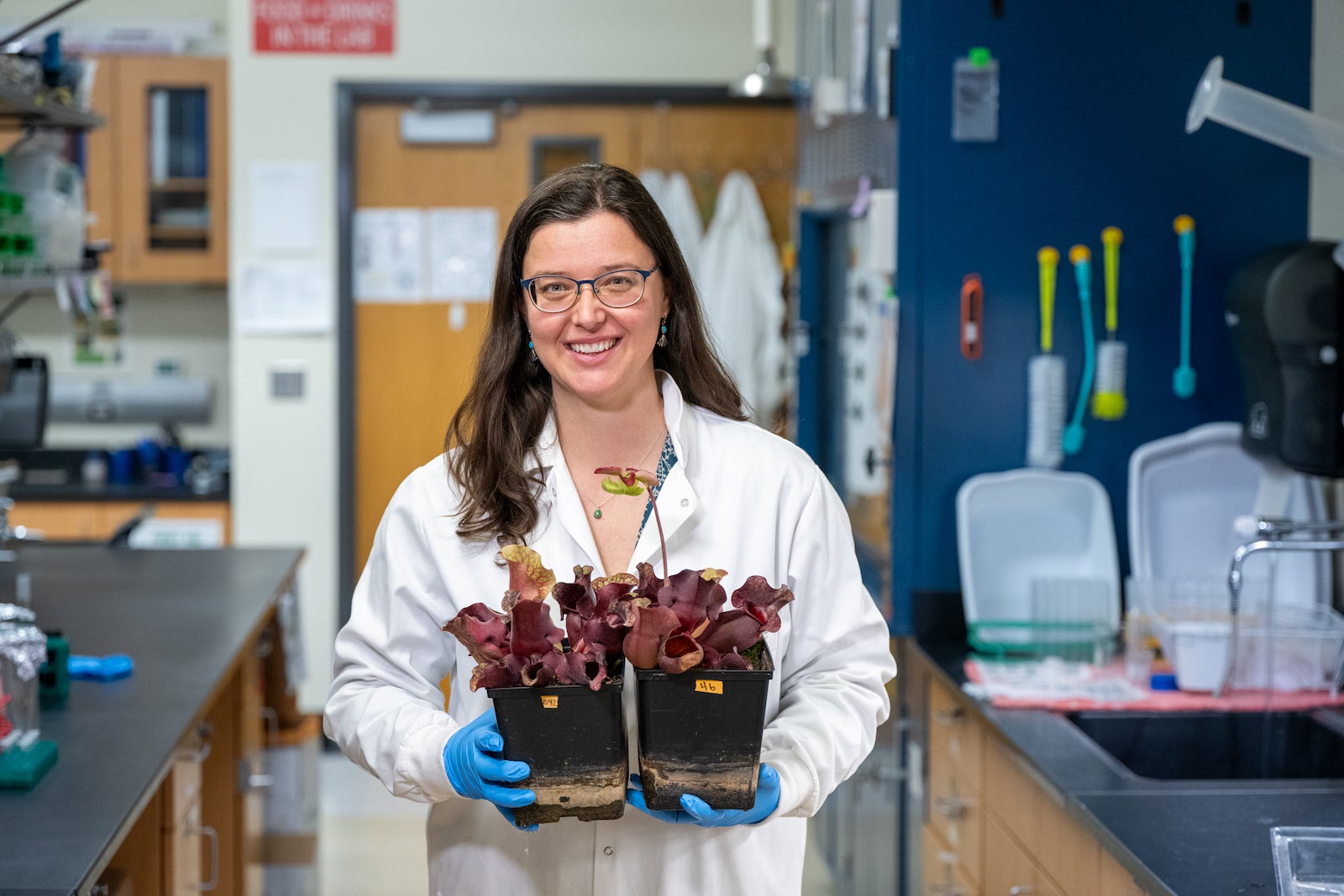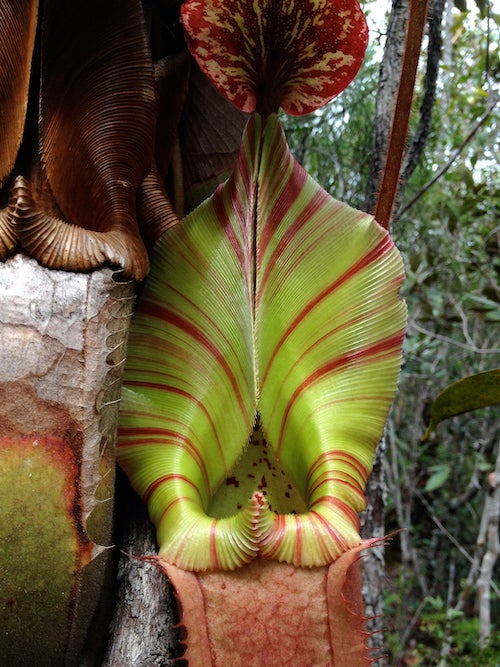Learning is all about asking questions, and no one asks questions better than children. Boise State is home to more than 1,400 faculty members and researchers who are eager to answer these amazing questions.
Today, Leonora Bittleston, an associate professor of biology, answers a child’s questions about carnivorous plants: “How can a plant EAT a bug? Do they have stomachs? How do they digest it?”

At Boise State, Bittleston manages her own lab where students and researchers study how microbial communities form, and how their dynamics affect their hosts as well as ecosystem structure and function. In 2023, she won a National Science Foundation CAREER award of nearly $870,000 to study the microbiomes of pitcher plants and sagebrush.
Question: ‘How can a plant EAT a bug?’
You might think it is incredibly rare for a plant to eat a bug, but the ability to eat bugs has actually evolved independently at least 12 times in more than 800 species of plants, Bittleston says.
Plants can photosynthesize – using sunlight, carbon dioxide, and water to make some of the compounds they need to grow – but they still need other nutrients like nitrogen and phosphorus as well.

That’s where insect prey comes in. The plants that have evolved to become carnivorous (“eat meat,” usually in the form of insects) grow in places where they have enough sunlight and water but not enough nitrogen or phosphorus in their soils. So, they get it from their prey instead.
From your questions, I can tell you are also interested in HOW they do it, since they don’t have teeth, stomachs and guts like we do.
Plants have quite a few different strategies for catching and digesting insects. Some, like the Venus flytrap, have snap-traps with tiny hairs that cause the traps to quickly clamp down on whatever is inside when they are triggered.
Others, called sundews, have super sticky leaves that trap insects similar to how fly paper might catch flies.
And the ones that I study are called pitcher plants and have pitfall traps, with cup-shaped leaves that are slippery on the inside and have water at the bottom where insects drown. The pitfall-traps must be a particularly good strategy because pitcher plants have evolved separately in three different lineages of plants!
Question: ‘Do they have stomachs? How do they digest it?’

Carnivorous plants make some of their own digestive enzymes to be able to break down things like proteins, fats and chitin (the material that makes up a bug’s exoskeleton) in insects to be able to get nitrogen and phosphorus in forms that they can absorb into their tissues.
But they also associate with microbes, like bacteria and fungi, that help them to digest their food. For example, scientists recently discovered that a particular fungus lives on sundew sticky traps all over the world, and helps the plant to digest the proteins in insects.
In pitcher plants, you can think of a pitcher’s pool of water as its version of a gut, and it has its own gut microbiome (kind of like ours!) to help it digest its food. It actually hosts a whole tiny ecosystem inside each modified leaf, and the communities living there are similar in pitcher plants even when they are on opposite sides of the world.
My team studies these communities of organisms, and we have found that it can really matter for the plant what their bacterial microbiome is like.
Some bacterial microbiomes can increase the plants growth by one and a half times in just eight weeks! We think it is because those bacterial communities are producing more chitinase enzymes that help break down the chitin in the insect exoskeletons.

Bonus question: ‘Can plants eat things besides bugs?’
Sometimes people wonder if carnivorous plants can eat other types of meat, besides insects.
Although insects (mainly ants) make up the majority of things pitcher plants eat, they have also been found to digest salamanders and even (very rarely) rodents in some plants with really big pitchers!
And other pitcher plants have evolved to not even eat insects anymore. Instead, they associate with animals like bats or tree shrews, and get the nutrients they need from the poop of those animals.
It’s your turn! Submit a question for a researcher to answer
Is your brain burning with questions?